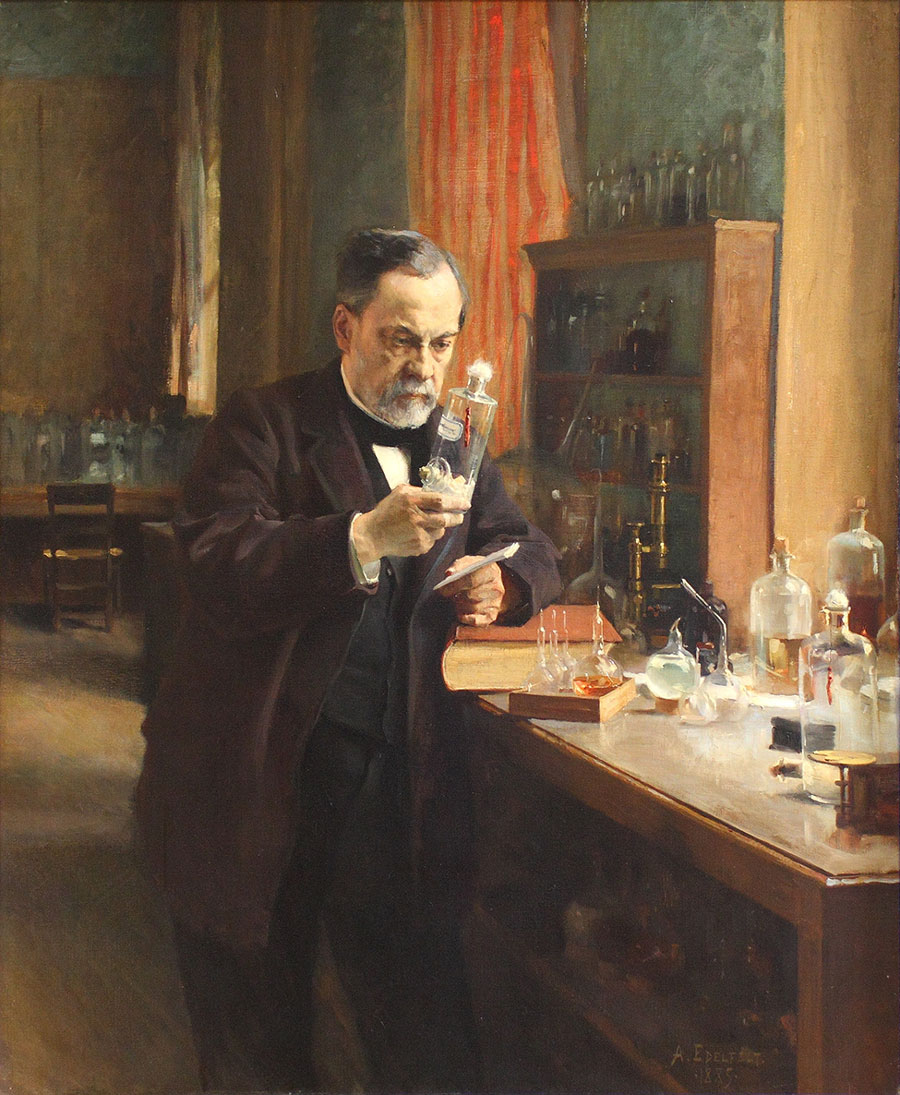Volume 30, Number 10—October 2024
Etymologia
Pasteurellaceae [pas′′-tər-ə-lā′-sē-ī]
A novel member of the family Pasteurellaceae, Emayella augustorita, was introduced in the August 2024 issue of Emerging Infectious Diseases, by Meyer and colleagues of Limoges, France. Isolated from a patient in France, the bacterium is a new member of the family Pasteurellaceae, named in honor of Louis Pasteur (Figure). Pasteur was deemed by medical historian Robert P. Gaynes to be the “most notable nonphysician in the history of medicine.” His name is most recognized for the eponymous pasteurization process, but he is also lauded in Linnaean taxonomy with the family name Pasteurellaceae, formally accepted in 1981. The designation was conceived to accommodate a collection of gram-negative organisms currently representing 34 genera and 105 species, described as “specialized commensals, primarily and potential pathogens of vertebrates–mainly mammals and birds.”
The constituent bacteria of this family have a propensity to inhabit the mucosal membrane of the mouth, respiratory, and genital tracts. The species Haemophilus influenzae and Aggregatibacter actinomycetemcomitamitans are well-known Pasteurellaceae that contribute to human illness. Of note, the Pasteurellaceae family is polyphyletic, and the taxonomy of some of the species is in need of further study.
References
- Meyer S, Tilloy V, Durand-Fontanier S, Lafon T, Garnier F, Martin C, et al. Emayella augustorita, new member of Pasteurellaceae, isolated from blood cultures of septic patient. Emerg Infect Dis. 2024;30:1719–21. DOIGoogle Scholar
- Gaynes RP. Louis Pasteur and the germ theory of disease. In: Germ theory: medical pioneers in infectious diseases. Washington: ASM Press; 2011. p. 143–71.
- Leibniz Institute DSMZ—German Collection of Microorganisms and Cell Cultures GmbH. List of Prokaryotic names with Standing in Nomenclature. Family Pasteurellaceae [cited 2024 May 18]. https://lpsn.dsmz.de/family/pasteurellaceae
- Bisgaard M. Taxonomy of the family Pasteurellaceae Pohl 1981. In: Donachie W, Lainson FA, Hodgson JC, editors. Haemophilus, Actinobacillus, and Pasteurella. Boston: Springer; 1995 [cited 2024 May 18].
- Christensen H, Bossé J, Angen Ø, Nørskov-Lauritsen N, Bisgaard M. Immunological and molecular techniques used for determination of serotypes in Pasteurellaceae. In: Pavia CS, Gurtler V, editors. Methods in microbiology, vol. 47. Immunological methods in microbiology. Cambridge: Academic Press; 2020 [cited 2024 May 18]. https://www.sciencedirect.com/science/article/pii/S0580951720300027
Figure
Cite This ArticleOriginal Publication Date: September 18, 2024
Related Links
Table of Contents – Volume 30, Number 10—October 2024
| EID Search Options |
|---|
|
|
|
|
|
|

Please use the form below to submit correspondence to the authors or contact them at the following address:
Clyde Partin, Emory Clinic,1365 Clifton Rd NE, Bldg A, 1st Fl, Atlanta, GA 30322, USA
Top